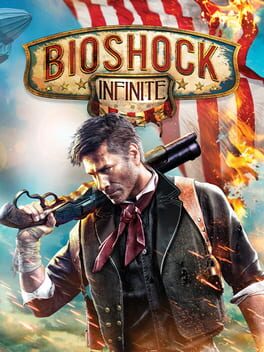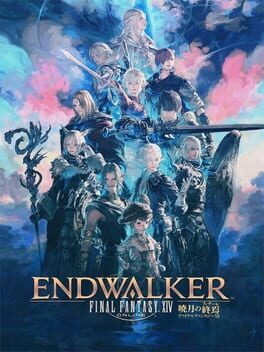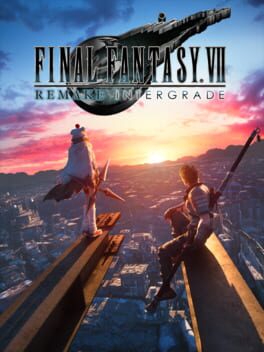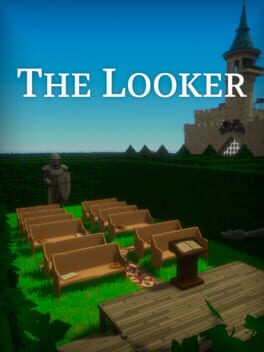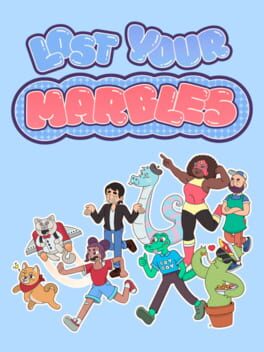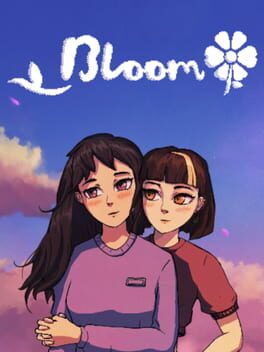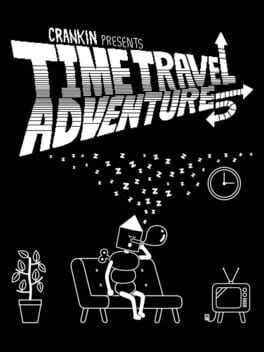atheneallen
2024
Posted this as a big thread on twitter earlier so just dropping it here too for posterity: I'm coining a new genre term.
No spoilers for any game I mention, outside of maybe minor mechanical ones.
I posit the argument that the Fez-like is its own genre, a genre which currently has 5 (+2) games that fit its template. These are Fez itself, La Mulana and its sequel, Tunic and Animal Well. The +2 are Outer Wilds and Inscryption, games that shares much of its design philosophy with the genre but with a key difference which we will get into shortly.
I have decided this genre should be called the Onionlike. Each of these games present themselves on the surface as some other genre - Fez is a platformer, Tunic is a Souls-like, Animal Well is a metroidvania - but after you begin to explore the game, this peels back to reveal further layers, primarily based around in-universe puzzles, like an onion! Outer Wilds and Inscryption are adjacent to this for different reasons:
Outer Wilds - this game is nakedly about exploration and the
entire thing is about it and there is not really any hidden layers. However it is worth a mention as being very similar to the second layer of Onionlikes.
Inscryption - Inscryption is actually still primarily a roguelike deckbuilder from top to bottom, with a few mega Easter eggs
For the eagle-eyed player. While some parts of the game ask you to do some puzzle solving (and there is a grand arg at the end of it) it is still ultimately a (very very good!) card game.
Ok with that out of the way let's talk about the originator of the Onionlikes, Fez.
Fez is a 2012 game by Polytron, a defunct game dev team (now small publisher) consisting of the infamous Phil Fish and Renaud Bédard, with Bédard writing Fez's engine and Fish doing nearly everything else except the soundtrack and SFX. On the surface, Fez is an esoteric platformer, primarily taking place in the 2D plane, but with the extra mechanic of being able to "spin" that plane. Each room in the game is actually a 3D area which can only be viewed from one side at a time. This is used to create light platforming puzzles.
As Gomez, the lil guy with the titular fez, you accidentally break a giant gold cube and have to go and find the pieces to restore it. As you do, you venture through many different environments, peppered with mysterious symbols, art and architecture that hint at a grander narrative. This story will never be told to you directly (and afaik has no actual canon interpretation). At some point, you will probably solve a puzzle that is not the primary puzzle of a room and will receive a purple cube instead of a gold one. This is an anti-cube.
This is where Fez reveals itself. The sprawling map of the world contains an equal number of cubes and anti-cubes, with the regular cubes being primarily found through platforming or easy surface level puzzles. You can finish Fez with just these cubes and get an ending.
This is the first layer of Fez. But when you get that first anti-cube, it will likely pique your interest. Maybe you start making note of the symbols in the world in a notebook. Maybe you start trying to decode what they mean. As you progress, getting more anticubes, you obtain more knowledge, decoding puzzles and symbols and language to unlock all the anticubes. This gives you a second ending.
But there is still more to find, still rooms of the map that puzzle. There is a third layer to Fez, one that - if this game takes you - you could spend manyhours puzzling over. One that, at the time, required community cooperation to solve, that took months of work. This is the soul of the Onionlike, a game that primarily takes place in the players head, a game that roots itself so deeply that I can still remember how to solve Fez's
puzzles over a decade later.
The design philosophy behind this is actually rooted in Myst. Myst is a 1993 puzzle game that stripped out a lot of the tropes of point and click games to make a game that primarily took place in the player's head. (Hbomb has a fantastic video on this
On his patreon that I would highly recommend watching). Myst was itself a direct influence on Fez and the basic design of the puzzles is very similar, asking the player to decode and understand a world that is totally alien to them.
However, I think it is fair to say Myst is quite imposing to a modern player. It presents nothing (not even a UI!) that could be recognised as "a video game" and in an era where games lean further and further into being frictionless, I think this makes Myst a pretty tough sell,
even though there's actually something magical to be experienced there. This is part of the magic of Onionlikes - by presenting a veneer of recognisable video game (whether it be the cube collecting of Fez or the "defeat these bosses" metroid pillars of Animal Well) to draw the player in actually works in the favour of keeping the modern player on board. As the player progresses through the "normal" game, the outer skin as it were, they will inevitably stumble on to a secret, or a puzzle they don't quite understand, and more often than not it'll pique their interest.
The tricky part comes in getting that balance right, though, something I feel that Animal Well is the first of these games to really nail. One of the main criticisms of Fez is that it's platforming is too simple, and the 3D spin gimmick isn't used that effectively, which is definitely fair. As an attention grabber, it works briefly, but unless the player quickly gets invested, I'm not sure it has the stressing power to ensure they get to see the good stuff. Tunic has the opposite problem.
Presenting itself as a Souls-like means Tunic inherits a lot.of the mechanics of a Souls game, many of which I would argue do not aid it's design in the slightest. Resetting progress at bonfires, stamina-based combat, enemies that always hit hard -
It all works to tire the player long before they get to layer 2. Luckily, there are accessibility options to set stamina and health to infinite, which I would recommend once you feel the game is getting too much
(for me, this was in the mine where your max health can be reduced until you next respawn)
But Animal Well is enough of a metroidvania to make the first layer satisfying in its own right without being frustrating, and it sprinkles its secrets through commonly enough in the early game to ensure they are enticed.
What all 3 of these games have in common, though, is how the different layers ask you to engage with the game. The surface is of course as we have already described, and layer 2 is deeper and more cerebral, asking the player to
Engage properly with the world as built, to treat it as a reality and interact with it as if it were, learning and doing. But the third layer is where things get fruity.
The third layer is often metatextual. To make a game like this, you have to really love video games, I feel.
Sometimes this is felt early; in Fez as the giant cube explodes your console or pc reboots with a fake "American Star!" POST screen of the 90s themed after Polyton. Sometimes, it's part of the discovery - Tunic's main collectables are pages of a manual,
the manual of the game you're actually playing but in an ancient language, with just enough simple English for you to understand. Like you're a kid reading it in the back of the car on the way home from blockbuster.
I think this love is what makes games like this possible. Because to make an Onionlike, something out there must have captured the designer's brain in the same way that they are trying to do now. Maybe it was Myst, or The Legend of Zelda, or (as I am inclined to believe is the case for Animal Well) Fez itself. But something out there twisted the developer's brain in a knot, and passing on that feeling is something truly special.
I don't expect to see these games often. I would be deeply surprised if we see another Onionlike before 2030 - they are a uniquely difficult undertaking as a developer. But each one that is made is magical, and tells us so much about the effect games had on the person making it.
No spoilers for any game I mention, outside of maybe minor mechanical ones.
I posit the argument that the Fez-like is its own genre, a genre which currently has 5 (+2) games that fit its template. These are Fez itself, La Mulana and its sequel, Tunic and Animal Well. The +2 are Outer Wilds and Inscryption, games that shares much of its design philosophy with the genre but with a key difference which we will get into shortly.
I have decided this genre should be called the Onionlike. Each of these games present themselves on the surface as some other genre - Fez is a platformer, Tunic is a Souls-like, Animal Well is a metroidvania - but after you begin to explore the game, this peels back to reveal further layers, primarily based around in-universe puzzles, like an onion! Outer Wilds and Inscryption are adjacent to this for different reasons:
Outer Wilds - this game is nakedly about exploration and the
entire thing is about it and there is not really any hidden layers. However it is worth a mention as being very similar to the second layer of Onionlikes.
Inscryption - Inscryption is actually still primarily a roguelike deckbuilder from top to bottom, with a few mega Easter eggs
For the eagle-eyed player. While some parts of the game ask you to do some puzzle solving (and there is a grand arg at the end of it) it is still ultimately a (very very good!) card game.
Ok with that out of the way let's talk about the originator of the Onionlikes, Fez.
Fez is a 2012 game by Polytron, a defunct game dev team (now small publisher) consisting of the infamous Phil Fish and Renaud Bédard, with Bédard writing Fez's engine and Fish doing nearly everything else except the soundtrack and SFX. On the surface, Fez is an esoteric platformer, primarily taking place in the 2D plane, but with the extra mechanic of being able to "spin" that plane. Each room in the game is actually a 3D area which can only be viewed from one side at a time. This is used to create light platforming puzzles.
As Gomez, the lil guy with the titular fez, you accidentally break a giant gold cube and have to go and find the pieces to restore it. As you do, you venture through many different environments, peppered with mysterious symbols, art and architecture that hint at a grander narrative. This story will never be told to you directly (and afaik has no actual canon interpretation). At some point, you will probably solve a puzzle that is not the primary puzzle of a room and will receive a purple cube instead of a gold one. This is an anti-cube.
This is where Fez reveals itself. The sprawling map of the world contains an equal number of cubes and anti-cubes, with the regular cubes being primarily found through platforming or easy surface level puzzles. You can finish Fez with just these cubes and get an ending.
This is the first layer of Fez. But when you get that first anti-cube, it will likely pique your interest. Maybe you start making note of the symbols in the world in a notebook. Maybe you start trying to decode what they mean. As you progress, getting more anticubes, you obtain more knowledge, decoding puzzles and symbols and language to unlock all the anticubes. This gives you a second ending.
But there is still more to find, still rooms of the map that puzzle. There is a third layer to Fez, one that - if this game takes you - you could spend manyhours puzzling over. One that, at the time, required community cooperation to solve, that took months of work. This is the soul of the Onionlike, a game that primarily takes place in the players head, a game that roots itself so deeply that I can still remember how to solve Fez's
puzzles over a decade later.
The design philosophy behind this is actually rooted in Myst. Myst is a 1993 puzzle game that stripped out a lot of the tropes of point and click games to make a game that primarily took place in the player's head. (Hbomb has a fantastic video on this
On his patreon that I would highly recommend watching). Myst was itself a direct influence on Fez and the basic design of the puzzles is very similar, asking the player to decode and understand a world that is totally alien to them.
However, I think it is fair to say Myst is quite imposing to a modern player. It presents nothing (not even a UI!) that could be recognised as "a video game" and in an era where games lean further and further into being frictionless, I think this makes Myst a pretty tough sell,
even though there's actually something magical to be experienced there. This is part of the magic of Onionlikes - by presenting a veneer of recognisable video game (whether it be the cube collecting of Fez or the "defeat these bosses" metroid pillars of Animal Well) to draw the player in actually works in the favour of keeping the modern player on board. As the player progresses through the "normal" game, the outer skin as it were, they will inevitably stumble on to a secret, or a puzzle they don't quite understand, and more often than not it'll pique their interest.
The tricky part comes in getting that balance right, though, something I feel that Animal Well is the first of these games to really nail. One of the main criticisms of Fez is that it's platforming is too simple, and the 3D spin gimmick isn't used that effectively, which is definitely fair. As an attention grabber, it works briefly, but unless the player quickly gets invested, I'm not sure it has the stressing power to ensure they get to see the good stuff. Tunic has the opposite problem.
Presenting itself as a Souls-like means Tunic inherits a lot.of the mechanics of a Souls game, many of which I would argue do not aid it's design in the slightest. Resetting progress at bonfires, stamina-based combat, enemies that always hit hard -
It all works to tire the player long before they get to layer 2. Luckily, there are accessibility options to set stamina and health to infinite, which I would recommend once you feel the game is getting too much
(for me, this was in the mine where your max health can be reduced until you next respawn)
But Animal Well is enough of a metroidvania to make the first layer satisfying in its own right without being frustrating, and it sprinkles its secrets through commonly enough in the early game to ensure they are enticed.
What all 3 of these games have in common, though, is how the different layers ask you to engage with the game. The surface is of course as we have already described, and layer 2 is deeper and more cerebral, asking the player to
Engage properly with the world as built, to treat it as a reality and interact with it as if it were, learning and doing. But the third layer is where things get fruity.
The third layer is often metatextual. To make a game like this, you have to really love video games, I feel.
Sometimes this is felt early; in Fez as the giant cube explodes your console or pc reboots with a fake "American Star!" POST screen of the 90s themed after Polyton. Sometimes, it's part of the discovery - Tunic's main collectables are pages of a manual,
the manual of the game you're actually playing but in an ancient language, with just enough simple English for you to understand. Like you're a kid reading it in the back of the car on the way home from blockbuster.
I think this love is what makes games like this possible. Because to make an Onionlike, something out there must have captured the designer's brain in the same way that they are trying to do now. Maybe it was Myst, or The Legend of Zelda, or (as I am inclined to believe is the case for Animal Well) Fez itself. But something out there twisted the developer's brain in a knot, and passing on that feeling is something truly special.
I don't expect to see these games often. I would be deeply surprised if we see another Onionlike before 2030 - they are a uniquely difficult undertaking as a developer. But each one that is made is magical, and tells us so much about the effect games had on the person making it.
2013
2023
This review contains spoilers
What happens when wild popularity collides with massive overambition?
Endwalker is such an abominable mess it feels almost insulting that it's part of the same game as Heavensward. I don't even really know what to say about it - it's so uniformly poor outside of Garlemald that it kind of beggars belief?
I have well and truly fallen in love with XIV this year. It's brought me new friends, new hobbies, new obsessions. I'm starting up a static. I've done content I thought I'd never touch. I've talked at length about lore, backstory and implications of beats with people who have become exceedingly close to me in just a few months. And Endwalker strolls up and detonates its story bomb directly under that.
Elpis is abysmal. The fanbases rehabilitation of Emet-Selch is writ fully into canon, from a grimy manipulative ancient race supremacist to uwu softboy bishonen in one scene. It (as well as many other retcons in this expansion) cheapen Shadowbringers completely, even erasing the impact "remember that we lived" has.
I like Meteion, to some extent. She very much didn't ask to be born - but assigning the final days as an event entirely to her doing is supremely boring. The sundering no longer makes sense - Hydaelyn actively makes things more difficult by doing it. Zenos is written out of the story entirely for most of it. You don't see him for about 30 hours after he wanders off in Garlemald!
The zones are pretty terrible all-over - Ultima Thule and the moon especially, which are a complete nightmare to navigate until you get flight. 2 of the 3 trials are mediocre at best, wwith only Endsinger being interesting. Two of the dungeons are just different towers.
Rushed development and covid clearly hit this pretty hard, but there's only so many excuses you can make. Especially when it is so clear that squishing two expansions into one is such an abject failure that, sadly, kills any potential either had with the finality the ending provides. We will now never see Garlemald's decline. We'll never see an expansion entirely focused around the ancients. Slamming them together is a disgrace to both.
And don't even get me started on the horrible fucked up dog that venat has. I hate it. I hate looking at it. Get rid of it.
At least pandaemonium is fun, and I've heard good things about post-expansion MSQ. But right now, Endwalker leaves a really sour taste in my mouth.
Endwalker is such an abominable mess it feels almost insulting that it's part of the same game as Heavensward. I don't even really know what to say about it - it's so uniformly poor outside of Garlemald that it kind of beggars belief?
I have well and truly fallen in love with XIV this year. It's brought me new friends, new hobbies, new obsessions. I'm starting up a static. I've done content I thought I'd never touch. I've talked at length about lore, backstory and implications of beats with people who have become exceedingly close to me in just a few months. And Endwalker strolls up and detonates its story bomb directly under that.
Elpis is abysmal. The fanbases rehabilitation of Emet-Selch is writ fully into canon, from a grimy manipulative ancient race supremacist to uwu softboy bishonen in one scene. It (as well as many other retcons in this expansion) cheapen Shadowbringers completely, even erasing the impact "remember that we lived" has.
I like Meteion, to some extent. She very much didn't ask to be born - but assigning the final days as an event entirely to her doing is supremely boring. The sundering no longer makes sense - Hydaelyn actively makes things more difficult by doing it. Zenos is written out of the story entirely for most of it. You don't see him for about 30 hours after he wanders off in Garlemald!
The zones are pretty terrible all-over - Ultima Thule and the moon especially, which are a complete nightmare to navigate until you get flight. 2 of the 3 trials are mediocre at best, wwith only Endsinger being interesting. Two of the dungeons are just different towers.
Rushed development and covid clearly hit this pretty hard, but there's only so many excuses you can make. Especially when it is so clear that squishing two expansions into one is such an abject failure that, sadly, kills any potential either had with the finality the ending provides. We will now never see Garlemald's decline. We'll never see an expansion entirely focused around the ancients. Slamming them together is a disgrace to both.
And don't even get me started on the horrible fucked up dog that venat has. I hate it. I hate looking at it. Get rid of it.
At least pandaemonium is fun, and I've heard good things about post-expansion MSQ. But right now, Endwalker leaves a really sour taste in my mouth.
This review contains spoilers
Peak Fiction.
That is what people claim of Shadowbringers alongside its compatriot Heavensward. "The best Final Fantasy story, full stop!" And I honestly have never been more baffled. Shadowbringers is simultaneously the best XIV has been thus far mechanically - and yet its tale bounces from soaring heights to crashing lows with alarming regularity.
To start with the good - an expansion involving all the Scions is a welcome joy. I love the Scions, the higlight of every part of the game, bringing comedy, levity and joy alongside their own impactful character moments. While all of the Scions by this point are well-established, so you're largely getting the gang back together in Norvrandt, these full-bodied character studies extend out to the Crystal Exarch. Reintroducing G'raha pulls at the heartstrings magically - Crystal Tower is still the best Alliance Raid plotline, and bringing him back in as a major player works to ground the player in Norvrandt while still providing some mystery. Plus in the post-patch content he eats a burger. King. I would die for him.
The dungeons and trials are sublime. I play tank, and this is the first time I've ever felt truly tested in regular duties - working and struggling alongside another tank and switching voke regularly in the Hades fight was great fun, and not what I expected from the normally fairly simple expansion bosses. Speaking of - what a fight. Incredible spectacle, and the introduction (where your other party members warp in from other shards) is magnificent.
But the rest of the expansion's plot and content leaves a lot to be desired. The Crystarium is breathtaking, but outside of Eulmore and Amarout, the areas largely feel like retreads. Eulmore is an impressive bit of environmental narrative, a true haves and have-nots case study - but it's ruined by the disgusting fatphobia that poisons every scene inside it. It is frankly apalling that this is a thing in Shadowbringers, especially after thus far XIV had been pretty good in its representation of how people can differ. What baffles me more is how I hadn't heard anything about it before we hit it. I cannot believe this is not a topic of constant discussion.
Amarout is another incredible spectacle, but what lets it down is what lets every expansion down - abysmal latter third pacing. You spend a grand total of half an hour in Amarout, an area that's clearly designed to ask you to consider Emet-Selch's state as one of the last remaining Ascians. But you spend so little time there, only really conversing with one of the shades that inhabit it, that it doesn't land at all. The reasoning behind this, as far as I can see, is to give you another area immediately before that reuses assets from the underwater section of Stormblood - another area that has no real bearing on the plot and is completely uninteresting to explore. Cutting it and have the WOL wake up in Amarout after the light overcomes them, and have the remainder of the expansion take place there, would have been a much more impactful sequence, and would likely have actually delivered on the area's promise.
Emet-Selch himself is easily the weakest villain of the expansions so far. He's irritating to listen to, scheming in a way that's extremely obvious and leaves no intrigue, and yet for whatever reason the Scions just accept him as a good boy now. It's a baffling decision. He pops up quite often enough to be irritating, but never actually encourages the player to properly sympathise with him. A waste of some perfectly good character beats. Zenos would eat him for breakfast. If we venture outside XIV then Sephiroth wipes the floor with him. Sorry, Selchfuckers.
But here's the kicker - after finishing Shadowbringers, I have started playing Final Fantasy XIV. Up to now, I was only really interested in the main quest, in finishing the Unending Story. But now I'm engaged in an FC, I'm levelling subclasses, I'm playing an alt. I'm writing fanfic. Shadowbringers really got me engaged with XIV the community, instead of XIV the game, and such despite its flaws I cannot really dislike it. I love Final Fantasy XIV.
That is what people claim of Shadowbringers alongside its compatriot Heavensward. "The best Final Fantasy story, full stop!" And I honestly have never been more baffled. Shadowbringers is simultaneously the best XIV has been thus far mechanically - and yet its tale bounces from soaring heights to crashing lows with alarming regularity.
To start with the good - an expansion involving all the Scions is a welcome joy. I love the Scions, the higlight of every part of the game, bringing comedy, levity and joy alongside their own impactful character moments. While all of the Scions by this point are well-established, so you're largely getting the gang back together in Norvrandt, these full-bodied character studies extend out to the Crystal Exarch. Reintroducing G'raha pulls at the heartstrings magically - Crystal Tower is still the best Alliance Raid plotline, and bringing him back in as a major player works to ground the player in Norvrandt while still providing some mystery. Plus in the post-patch content he eats a burger. King. I would die for him.
The dungeons and trials are sublime. I play tank, and this is the first time I've ever felt truly tested in regular duties - working and struggling alongside another tank and switching voke regularly in the Hades fight was great fun, and not what I expected from the normally fairly simple expansion bosses. Speaking of - what a fight. Incredible spectacle, and the introduction (where your other party members warp in from other shards) is magnificent.
But the rest of the expansion's plot and content leaves a lot to be desired. The Crystarium is breathtaking, but outside of Eulmore and Amarout, the areas largely feel like retreads. Eulmore is an impressive bit of environmental narrative, a true haves and have-nots case study - but it's ruined by the disgusting fatphobia that poisons every scene inside it. It is frankly apalling that this is a thing in Shadowbringers, especially after thus far XIV had been pretty good in its representation of how people can differ. What baffles me more is how I hadn't heard anything about it before we hit it. I cannot believe this is not a topic of constant discussion.
Amarout is another incredible spectacle, but what lets it down is what lets every expansion down - abysmal latter third pacing. You spend a grand total of half an hour in Amarout, an area that's clearly designed to ask you to consider Emet-Selch's state as one of the last remaining Ascians. But you spend so little time there, only really conversing with one of the shades that inhabit it, that it doesn't land at all. The reasoning behind this, as far as I can see, is to give you another area immediately before that reuses assets from the underwater section of Stormblood - another area that has no real bearing on the plot and is completely uninteresting to explore. Cutting it and have the WOL wake up in Amarout after the light overcomes them, and have the remainder of the expansion take place there, would have been a much more impactful sequence, and would likely have actually delivered on the area's promise.
Emet-Selch himself is easily the weakest villain of the expansions so far. He's irritating to listen to, scheming in a way that's extremely obvious and leaves no intrigue, and yet for whatever reason the Scions just accept him as a good boy now. It's a baffling decision. He pops up quite often enough to be irritating, but never actually encourages the player to properly sympathise with him. A waste of some perfectly good character beats. Zenos would eat him for breakfast. If we venture outside XIV then Sephiroth wipes the floor with him. Sorry, Selchfuckers.
But here's the kicker - after finishing Shadowbringers, I have started playing Final Fantasy XIV. Up to now, I was only really interested in the main quest, in finishing the Unending Story. But now I'm engaged in an FC, I'm levelling subclasses, I'm playing an alt. I'm writing fanfic. Shadowbringers really got me engaged with XIV the community, instead of XIV the game, and such despite its flaws I cannot really dislike it. I love Final Fantasy XIV.
This review contains spoilers
Intermission is an incredible statement of intent after Remake's steps into the unknown. Blasting out of the gate with Yuffie in Midgar, a new character, the Whispers buffeting you away from Seventh Heaven, fucking Nero and Weiss? It's truly excellent to have the Remake team go fully off the chain.
And what a way to remove that chain! Playing as Yuffie only feels a bit strange after forty hours of a full team, especially since character switching was such an important part of my playstyle for Remake. But the synergy system is great, and Yuffie's dynamism as both a close and long range fighter is very cool to steer. The ninjutsu system works wonders, so much so that I felt no need to have elemental spells equipped to Yuffie at all.
Being back in Sector 7 is great, too. Much of Remake's magic is in how it builds its districts as real places, and being back there, seeing those people again (however briefly!) - it feels like coming home.
Finally, god it's good to have Remake's explicitly anti-fascist sentiment hammered home again. Yuffie saying "we should go with the splinter group instead" - hell yeah, sis! Hell fucking yeah! Direct action works!
And what a way to remove that chain! Playing as Yuffie only feels a bit strange after forty hours of a full team, especially since character switching was such an important part of my playstyle for Remake. But the synergy system is great, and Yuffie's dynamism as both a close and long range fighter is very cool to steer. The ninjutsu system works wonders, so much so that I felt no need to have elemental spells equipped to Yuffie at all.
Being back in Sector 7 is great, too. Much of Remake's magic is in how it builds its districts as real places, and being back there, seeing those people again (however briefly!) - it feels like coming home.
Finally, god it's good to have Remake's explicitly anti-fascist sentiment hammered home again. Yuffie saying "we should go with the splinter group instead" - hell yeah, sis! Hell fucking yeah! Direct action works!
This review contains spoilers
This post contains spoilers for both versions of Final Fantasy 7, as well as Neon Genesis Evangelion and the entire Rebuild of Evangelion series.
Such is the hand of fate,
Have I ever been here before?
Is it better that I don't know?
Have I anything left but fate?
Can I trust in my destiny?
Is it out of my hands to see?
Must I live by the hand of fate? - Shiro Sagisu, Music from “SHIN EVANGELION”
Neon Genesis Evangelion is an anime series broadcast between 1995 and 1996. While ostensibly a mecha series, as the series goes on Evangelion focuses more and more of its time on the interpersonal relationships of its cast, culminating in a deeply inward looking two-part finale that questions the main character's worldview and allows him to grapple with making connections with other people. This series was followed in 1997 by a film, The End of Evangelion, that expanded upon the message of the original ending and clarified the true purpose of the Human Instrumentality Project. It is widely regarded as a masterpiece.
Final Fantasy 7 is a JRPG released by Square Enix in 1997. Introducing the world to Cloud, Tifa, Barret and Aerith, it ties its players in tangled, loving webs with a beautifully realised cast of characters and a breathtaking world in Midgar and beyond. It is widely regarded as a masterpiece.
Rebuild of Evangelion is a series of anime films that is based on the original anime series Neon Genesis Evangelion. What begins in 2006 as a straight, shot-for-shot remake of the first 6 episodes of the series quickly pivots into brand new territory. By the third film, the world is in a completely different state than that we are used to from the original NGE, with Shinji Ikari having defied the fates themselves to rescue Rei Ayanami at the end of Rebuild 2.0. As the films continue, reception varies, as fans and critics alike are unsure how to deal with their expectations being upturned and the story they know and love being averted at any given opportunity.
Final Fantasy 7 Remake is a 2020 action-JRPG that is based on the original Final Fantasy 7. What begins as a straight shot-for-shot remake of the attack on the Sector 5 reactor quickly pivots into brand new territory, introducing the Whispers of Fate, a new SOLDIER and, critically, Sephiroth, just an hour or so in. Midgar is expanded, transcending the brief 6 hour jaunt in the original to become one of the most viscerally lived in cities ever depicted in a game. As Remake hits the notes the player has heard before, the divergences ratchet. The sewers are bigger. Wedge survives the plate drop. Barrett is killed and resurrected. The game rages at the confines it's been put under, eeking creativity out of every corner. Even the nature of the battle system belies it: almost-DMC combat tied into the ATB system for special moves, modernity spitting and sparking against the tradition. Not that that is a negative - the fusion here is excellently designed, constantly giving you new toys to play with and new setups to knock down.
But it is at Remake's conclusion that things reach their zenith. Shinji reaches his hand out to Rei, and Cloud readies his sword against the voice of the fans. At the end of it all, Avalanche are free of the chains of fate ready to strike off in whatever direction they choose. Will Aerith still die? Has Meteor already been averted? Or are the ties that bind not so easily undone?
There is often a question to be asked of exactly what the purpose of remaking something is. Capcom's approach, clearly, is revisionism. The Resident Evil series is soon to receive its fourth remake. The remakes of 2 and 3 have already demonstrated what it is Capcom care to do here: namely, make these games again, beat for beat, but in Resident Evil 4's action mould. Any plot diversion is almost accidental - especially strange when the first REmake was so wildly different to the original. What is the benefit of doing that to Resident Evil 4 itself? Is there even one?
People asked the same of Rebuild of Evangelion, too. Even now, if you ask, fans will say to skip them. "Don't bother. They're a cashgrab." But the approach taken by Rebuild and, in turn, by Final Fantasy VII Remake proves to be much more. Exploring what made the original great, while telling a brand new tale.
I hope Rebirth and whatever comes after follow that path. At the end of Rebuild 3.0 + 1.0, after seeing behind the curtain of creation, Shinji realises that the only way he can guarantee safety for his friends, the only way he can accept himself, and the only way Hideaki Anno can leave Evangelion, is to create a world without it. I simply hope we can achieve the same for Cloud, Aerith, Tifa and Barrett, characters who mean so much to so many.
さよなら全てのフィナルファンタシー七。
Such is the hand of fate,
Have I ever been here before?
Is it better that I don't know?
Have I anything left but fate?
Can I trust in my destiny?
Is it out of my hands to see?
Must I live by the hand of fate? - Shiro Sagisu, Music from “SHIN EVANGELION”
Neon Genesis Evangelion is an anime series broadcast between 1995 and 1996. While ostensibly a mecha series, as the series goes on Evangelion focuses more and more of its time on the interpersonal relationships of its cast, culminating in a deeply inward looking two-part finale that questions the main character's worldview and allows him to grapple with making connections with other people. This series was followed in 1997 by a film, The End of Evangelion, that expanded upon the message of the original ending and clarified the true purpose of the Human Instrumentality Project. It is widely regarded as a masterpiece.
Final Fantasy 7 is a JRPG released by Square Enix in 1997. Introducing the world to Cloud, Tifa, Barret and Aerith, it ties its players in tangled, loving webs with a beautifully realised cast of characters and a breathtaking world in Midgar and beyond. It is widely regarded as a masterpiece.
Rebuild of Evangelion is a series of anime films that is based on the original anime series Neon Genesis Evangelion. What begins in 2006 as a straight, shot-for-shot remake of the first 6 episodes of the series quickly pivots into brand new territory. By the third film, the world is in a completely different state than that we are used to from the original NGE, with Shinji Ikari having defied the fates themselves to rescue Rei Ayanami at the end of Rebuild 2.0. As the films continue, reception varies, as fans and critics alike are unsure how to deal with their expectations being upturned and the story they know and love being averted at any given opportunity.
Final Fantasy 7 Remake is a 2020 action-JRPG that is based on the original Final Fantasy 7. What begins as a straight shot-for-shot remake of the attack on the Sector 5 reactor quickly pivots into brand new territory, introducing the Whispers of Fate, a new SOLDIER and, critically, Sephiroth, just an hour or so in. Midgar is expanded, transcending the brief 6 hour jaunt in the original to become one of the most viscerally lived in cities ever depicted in a game. As Remake hits the notes the player has heard before, the divergences ratchet. The sewers are bigger. Wedge survives the plate drop. Barrett is killed and resurrected. The game rages at the confines it's been put under, eeking creativity out of every corner. Even the nature of the battle system belies it: almost-DMC combat tied into the ATB system for special moves, modernity spitting and sparking against the tradition. Not that that is a negative - the fusion here is excellently designed, constantly giving you new toys to play with and new setups to knock down.
But it is at Remake's conclusion that things reach their zenith. Shinji reaches his hand out to Rei, and Cloud readies his sword against the voice of the fans. At the end of it all, Avalanche are free of the chains of fate ready to strike off in whatever direction they choose. Will Aerith still die? Has Meteor already been averted? Or are the ties that bind not so easily undone?
There is often a question to be asked of exactly what the purpose of remaking something is. Capcom's approach, clearly, is revisionism. The Resident Evil series is soon to receive its fourth remake. The remakes of 2 and 3 have already demonstrated what it is Capcom care to do here: namely, make these games again, beat for beat, but in Resident Evil 4's action mould. Any plot diversion is almost accidental - especially strange when the first REmake was so wildly different to the original. What is the benefit of doing that to Resident Evil 4 itself? Is there even one?
People asked the same of Rebuild of Evangelion, too. Even now, if you ask, fans will say to skip them. "Don't bother. They're a cashgrab." But the approach taken by Rebuild and, in turn, by Final Fantasy VII Remake proves to be much more. Exploring what made the original great, while telling a brand new tale.
I hope Rebirth and whatever comes after follow that path. At the end of Rebuild 3.0 + 1.0, after seeing behind the curtain of creation, Shinji realises that the only way he can guarantee safety for his friends, the only way he can accept himself, and the only way Hideaki Anno can leave Evangelion, is to create a world without it. I simply hope we can achieve the same for Cloud, Aerith, Tifa and Barrett, characters who mean so much to so many.
さよなら全てのフィナルファンタシー七。
1997
This review contains spoilers
I don't know what I could possibly say about Final Fantasy VII, a game that created a frankly unmatched legacy, that hasn't already been said. Well, except for maybe one thing: despite knowing the big end of part 1 twist, for years - I still approached dreading it. I cried as the materia fell from her hair. I bawled as Cloud lowered her into the Lifestream. It is a true testament to FFVII's confidence and delivery that a moment I've known about since seeing it as the URL of a fucking hentai site in my teenage years could still send me reeling as hard as it is.
I've never been much for JRPGs. The turn-based combat isn't really for me, and the genre's obsession with wonky levelling curves is constantly offputting. And let's be clear, the latter is absolutely present in FFVII - and the game was much much better once I jacked into the matrix and jacked my party's stats a bit. But my partner has long loved FFVII, and with me deciding to cosplay Dress Cloud for next MCM, I felt it only right I actually play the game I'm cos-ing. Don't wanna be a fake fan, after all.
And god, I am so glad I did. Hanging out with Avalanche is an absolute blast. The Cloud/Sephiroth dynamic is brilliantly played, and that whole mystery with what exactly happened in Nibelheim is superb. Your connections with Aerith, Tifa, Barret and the rest carry the middle third so well that I didn't even really care that the plot was kinda aimless for a bit. It doesn't matter, because chilling with the gang is enough.
I'm in, you got me. I watched Advent Children after finishing this and then dove straight into Remake. Square have got me on the hook, and I only wish they'd got me sooner.
I've never been much for JRPGs. The turn-based combat isn't really for me, and the genre's obsession with wonky levelling curves is constantly offputting. And let's be clear, the latter is absolutely present in FFVII - and the game was much much better once I jacked into the matrix and jacked my party's stats a bit. But my partner has long loved FFVII, and with me deciding to cosplay Dress Cloud for next MCM, I felt it only right I actually play the game I'm cos-ing. Don't wanna be a fake fan, after all.
And god, I am so glad I did. Hanging out with Avalanche is an absolute blast. The Cloud/Sephiroth dynamic is brilliantly played, and that whole mystery with what exactly happened in Nibelheim is superb. Your connections with Aerith, Tifa, Barret and the rest carry the middle third so well that I didn't even really care that the plot was kinda aimless for a bit. It doesn't matter, because chilling with the gang is enough.
I'm in, you got me. I watched Advent Children after finishing this and then dove straight into Remake. Square have got me on the hook, and I only wish they'd got me sooner.
2022
It must be hard to create a "parody video game." Everyone's done the easy jokes, even games that are supposed to be serious po-faced prestige games. And pastiching a particular game is a lot of trouble to go to, since you've got to recreate the look, the style, the mechanics... No wonder we haven't got "The Worst of Us: Part 2" or something.
But the Witness, now there's a good target, right? It's beautiful, but not overtly difficult to recreate the style of. It's clever, but also takes itself a bit too seriously. And the central mechanic is flexible enough that even if your jokes don't land, you can actually create a pretty good puzzle game just by riffing on it.
So that gets us The Looker, which is, for the low low price of free, far better than it has any right to be. Not every joke lands, but there's enough that you'll probably be tickled by a few of them. And it uses the player's assumed knowledge of The Witness to further twist that game's mechanics - I particularly enjoyed the clever little pirate ship puzzle.
This is worth an hour of your time whether you loved or hated the Witness. If nothing else, you get to experience some of that game's wonder without giving any cash to old Blow.
But the Witness, now there's a good target, right? It's beautiful, but not overtly difficult to recreate the style of. It's clever, but also takes itself a bit too seriously. And the central mechanic is flexible enough that even if your jokes don't land, you can actually create a pretty good puzzle game just by riffing on it.
So that gets us The Looker, which is, for the low low price of free, far better than it has any right to be. Not every joke lands, but there's enough that you'll probably be tickled by a few of them. And it uses the player's assumed knowledge of The Witness to further twist that game's mechanics - I particularly enjoyed the clever little pirate ship puzzle.
This is worth an hour of your time whether you loved or hated the Witness. If nothing else, you get to experience some of that game's wonder without giving any cash to old Blow.
2022
This could probably be best described as "mad libs with physics". The thrust of the game is you play a little pachinko table each time you make a decision in the story, leading to a bunch of different lines and story outcomes. It's fun enough, and the writing is funny enough, but not enough to make me want to go straight back into it like the other game this week did.
2022
A really good little puzzler! Similar to Panel-De-Pon, but with the added twist that each match set doesn't get instantly disappeared - and instead, the comboing comes from manually clearing a bunch of packages at once when you're ready (or before a garbage timer forces you to lose one). So the pressure is to make as big a package as possible each time, but without trapping panels around them. It's really quite excellent, and the charming story that goes along with it to introduce each mechanic (of which there's a surprising amount of variants!) is nice too. Dogs hate Amazon, basically.
2022
Really enjoyed my time with Bloom. A sweet coming of age story about a queer women in Japan who opens a flower shop. The game takes place in real time, with flowers growing over the course of multiple-real world hours. The story is told through Midori's phone, which every few hours or so will buzz with a new conversation for you to read through and make (basically meaningless, but still nice to include) choices. The stakes are never high, and every minute spent looking at Midori's tokatsu or her little stray black cat is a minute well spent.
I will say that I felt the subject matter was kind of an odd choice for a dev team entirely (as far as I can gather) made up of American men. While I definitely don't think you can't write about things you haven't directly lived, there were periods where it felt very much to me like I was reading what a man thought two young queer girls would interact like, instead of anything real. But I could just be reading too much into that.
I will say that I felt the subject matter was kind of an odd choice for a dev team entirely (as far as I can gather) made up of American men. While I definitely don't think you can't write about things you haven't directly lived, there were periods where it felt very much to me like I was reading what a man thought two young queer girls would interact like, instead of anything real. But I could just be reading too much into that.
2022
Honestly couldn't tell you what's going on in this. Esoteric audio interfaces are one thing (I love my Pocket Operator and have been listing after an OP1 for years) and you'd think that shared Teenage Engineering pedigree in the hardware would help, but Boogie Loops is about as transparent as a brick wall. Impossible to know if what you're doing is even effecting the track without having spent multiple hours deciphering the UI. Not for me, this one.
2022
Seems fine? The focusing mechanic that uses the crank is really well put together and a lot of fun, but can be quite irritating when a bird is flitting around the screen as it does take a few seconds to dial in the focus correctly. Otherwise this is a fairly standard top-down adventure game, like if you took Links Awakening and stripped everything but the item swap chain quest. The writing did absolutely nothing for me, sadly. Not bad, not amazing, will probably come back to it at some point.
Keira Takahashi's season 1 playdate title is as adorably bananas as you might expect. It's also wildly difficult, far more than I had considered it might be. You really, really have to crank fast in some places - to the extent that I wonder if Crankin' was used as a stress test for the hardware. Overall pretty neat, looking forward to finishing the rest of the levels over the next couple of weeks.

